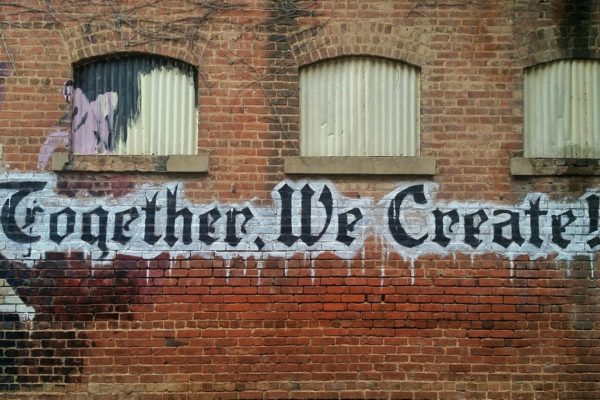According to research conducted on the success rates of leadership training initiatives companies around the world spend an average of $366 billion annually on leadership training and development—a staggering number, especially when considering that US companies by themselves account for $166 billion of that number. The problem is, according to a different study done by the McKinsey group, most of these initiatives don’t succeed in the long term, and fail to create lasting or meaningful change.
Somehow, this doesn’t come as much of a surprise; employees are often too familiar with the rote and procedure of having some fanciful training initiative brought down from on high that is implemented messily and without accountability, resulting in “in one ear, out the other” training sessions where no one learns anything. These tend to make senior leaders “feel good” that they are trying to develop their leadership bench, but in reality, they’re only offering a temporary, one-size-fits-all approach to a problem that is multifarious and complex in nature.

Why is this? Well, the reasons are manifold. As mentioned in the paragraph above, perhaps the single biggest reason that most leadership training initiatives fail is because each person is different, and no one course or coach can teach everyone in the same way. This is why context is so crucial—in order to successfully train and develop leaders, we need to be offering a variety of training programs and courses that suit the needs of each individual learner. As researchers in the McKinsey report put it, “Too many training initiatives we come across rest on the assumption that one size fits all, and that the same group of skills or style of leadership is appropriate regardless of strategy, organizational culture, or CEO mandate.” Trying to fit a square peg into a round hole will never work, and leadership development is no different. Additionally, most of this work requires consistent practice and mindful application in order to achieve sustainable change and growth; “one time and done” simply does not work. What is needed is consistent and regular training, often delivered through a system like Methods of 100 Coaches, where an ever-expanding library of new courses, coupled with advanced reporting and accountability features provide learners with a robust tool that they can use every day. In order to truly grow in your leadership capacity, you have to be committed to lifelong learning.

Another reason that training initiatives fail to be transformational is the lack of proper mindset within the organization. Just as plants need fertile soil to grow, employees need a fertile work culture that supports psychological safety in order to develop as people and leaders. If the workplace culture is hostile towards change or self-analysis, and relies heavily on a sense “the way we’ve always done things,” you’ll never truly create an environment where employees have the space needed to stretch and become the best they can be. Another aspect of this is the growing pain of learning—that discomfort you feel when challenging ingrained behaviors and habits. This sense of discomfort can also be a reason why people quit or don’t stick to their plans; it’s painful, but the results can’t exist without it. Athletes push their bodies to their limits all the time during training and conditioning so that they might gain muscle and become stronger, faster, or more capable. Leadership training and development requires an open mindset—one that is ready to analyze itself critically and thoroughly in order to find those problem areas and make them better—and one that doesn’t emanate from the individual employee, but rather that is imbued and supported from within by the organization’s culture.
Other areas that contribute to the failure of leadership development initiatives are the lack of metrics for how well these programs perform and the outcomes that result from them. While leaders can talk a big game with regards to leadership training, they often fail to cite evidence towards the value of their investments in these directives, which ultimately results in a less-than-serious attitude towards these training programs. In any other sector of business, this would be an abhorrent practice; sales, marketing, R&D, customer service, and other departments, all rely strongly on data from their customers, the market, and their internal stakeholders on how well their product or service is performing in the global marketplace to inform their decisions. Without this, decisions would be made only based on hunches and assumptions and feelings—not the most surefire way to build or run a business. So why aren’t leaders measuring the impacts of these programs? For one, it may be hard to accurately quantify things like “soft skills,” as they tend to show up in subtle, interpersonal behavioral ways, rather than overtly in business actions. Another reason may be that the training itself was aimless and one-size-fits-all, and so it really didn’t do anything, so there is no data to show for it—except that things have remained consistent. The McKinsey report outlines that, “Metrics might include cost savings and the number of new-store openings for a retail business, for example, or sales of new products if the program focused on the skills to build a new-product strategy. American Express quantifies the success of some of its leadership programs by comparing the average productivity of participants’ teams prior to and after a training program, yielding a simple measure of increased productivity.”

Another common misstep in the process of creating leadership development pathways for an organization is the belief that if you build it, they will come. While self-directed leadership training programs are great for employee autonomy and repeatability, they often lack the “teeth” that comprise most successful follow-through strategies. That’s why, at Methods, we have worked to create a system that answers all sides of the problem, offering both a robust path for self-directed learning, but also enough accountability tools and reporting features to engage higher-ups and senior level leaders in the process. These include report cards and tracking completion dates, and even a community feature where learners can interact with each other and discuss the training material.

As with any push to change in life—be that a diet, or to quit a bad habit—we tend to start strong with tons of momentum, and then slowly die out. Just think of that oft-cited figure for gym membership drop-off rates in February each year. Real change requires commitment and dedication, and in order to do that, you first have to be in an environment conducive to that. Psychological safety, as we’ve seen, is a key factor in this; providing the right playing field for the game of lasting development to take place. Many leaders believe that if they just empower the individual to get better, and provide them with the tools, magic will happen. What they fail to realize, though, is that the system is much more powerful than the individual, and that it may require, in tandem, an overhaul of the organization’s culture in order to facilitate an environment in which this deep learning and impactful change can take place.
Sources of Inspiration:
- Why leadership-development programs fail
- Why Leadership Development Fails
- Why Leadership Training Fails and What to Do About It
- 5 Reason Leadership Development Programs Fail
- Leadership Development Is a $366B Industry: Here’s Why Most Programs Don’t Work
- Why Leadership Development Fails: 7 Reasons Companies Are Struggling
- YouTube Video: Why Leadership Training Fails





